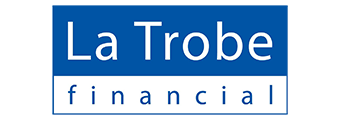Rent-to-buy schemes, sometimes called rent-to-own schemes, don't have the best reputation in Australia.
The schemes have been widely accused of exploiting lower-income earners as they try to get into the property market. In fact, rent-to-buy has been banned in Victoria and South Australia (except through the South Australian Housing Authority), while laws governing it differ between other states and territories.
If you're considering entering a rent-to-buy agreement in a bid to own your own home, it's important to understand how the schemes work and the potential risks that come with them.
What is rent-to-buy?
A rent-to-buy scheme is essentially a rental lease agreement that gives tenants the option to buy the place they're renting at the end of a set period, usually three to five years. While renting a property isn’t exactly the same thing as leasing it, both still share some same aspects.
Sometimes, the price of the home is pre-agreed, and can be higher than market value to cover any potential rise in the property market. In other schemes, the price may only be determined when it's time to finalise the purchase.
Unlike a standard rental agreement, the rent a tenant pays goes to building 'equity' in the property. However, their name doesn't appear on the title and their money isn't generally returned to them if the deal isn't finalised.
In many cases, the rent paid in rent-to-buy agreements can be higher than what tenants would pay for a comparable property on the broader market.
Tenants are typically required to pay additional charges, such as an upfront sum towards a non-refundable deposit. They may also face an 'option to buy' charge, which is also not refundable if they decide against buying the property at the end of the rental period.
Many schemes require the buyer to finance their purchase at the end of the rental period by taking out a normal home loan. This can be extremely difficult, or even impossible, for lower-income participants, who may be paying above-market value for the home in the first place.
In other schemes that provide vendor finance, homeowners are often bound to paying higher interest rates with tighter terms and conditions on top of the money they've already sunk into the scheme.
Under many rent-to-buy schemes, participants stand to lose all the money they've already paid if they default at any time during the course of their contract.
Suffice to say, a person considering entering into a rent-to-buy agreement should do their homework carefully to ensure they'll be better off by doing so.
Why are rent-to-buy schemes outlawed in some states?
In 2016, the Consumer Action Law Centre found the majority of people entering into rent-to-buy arrangements were lower-income earners unable to qualify for a mortgage with mainstream lenders.
Many were unable to put together a large enough deposit, couldn't afford ongoing loan repayments, or had poor credit histories.
At the time of its review, the Centre said it had seen "no examples" of successful rent-to-buy deals and that the deals were "unaffordable" from the outset with "grossly inadequate" legal protections for participants.
The Consumer Law Action Centre recommended the schemes be banned in Australia. Victoria outlawed them in 2020 while South Australia now only allows them through the state's housing authority.
There are still rent-to-buy schemes operating in other states and territories, and since the Centre's investigation and ensuing negative media coverage, several modified rent-to-buy schemes have entered the market.
If you're considering a rent-to-buy or a rent-to-own scheme to get a foothold in the property market, make sure to consider the terms and conditions of the deal very carefully. It also pays to get independent legal advice before you sign anything.
That said, let's consider some potential benefits and drawbacks of the rent-to-buy model.
Pros of rent-to-buy homes
For all the pitfalls of rent-to-buy contracts, there are some drawcards that keep homebuyers signing up in states and territories where such schemes are still legal:
Opportunity for equity
Rather than paying 'dead rent' to a landlord, rent-to-buy or rent-to-own schemes promise renters a chance to put that money towards equity in their own property. For those who feel they have little chance of saving a deposit while they're renting, this can be an enticing prospect.
Chance of home ownership
Rent-to-buy schemes are marketed to attract people who feel they have little chance of entering the property market by seeking finance through mainstream lenders. Many people see such schemes as their answer to purchasing their own home when other factors are stacked against them, such as low incomes, unsteady employment history, a lack of a deposit, and/or a poor credit record.
Fixed purchase price
Most rent-to-buy schemes will set a purchase price upfront (usually taking into account future rises in property values). Some participants feel more comfortable knowing the price they'll pay for the home in advance.
Live in the property before you buy
Rent-to-buy homes allow participants to live in the property first before they purchase it. This can be a positive, except in schemes where any built-up 'equity' is forfeited if tenants decide not to go ahead with the purchase.
Cons of rent-to-buy schemes
High rent
As fees are generally built into regular rental payments, rents can be higher than for other comparable properties on the market.
No ownership until final payment
Participants generally don't hold any ownership over their homes until they can secure a traditional home loan at the end of a rental agreement. While schemes may be marketed as though tenants are building equity in their properties, their name won't appear on any title until that time. If they fail to secure a lender at the end of a rent-to-buy agreement, or are forced to move during the agreement, they'll likely have no legal ownership over the property and could lose any funds they've already contributed.
Property could drop in value
While property values have invariably risen over the long term, they typically fluctuate over shorter time frames - sometimes dramatically. When it comes time for tenants to take over ownership of the home at a predetermined price, they might find they're paying far more than it's worth. Also, if the price is considerably higher than the lender's valuation, it could be difficult for participants to secure a home loan.
Inflated purchase price
As with rents, purchase prices for rent-to-buy homes generally tend to be higher than other comparable properties on the market.
No guarantee you'll be able to purchase
When a participant signs a rent-to-buy agreement, there's no guarantee they'll qualify for a traditional home loan come the end of the tenancy.
The Consumer Action Law Centre found many people signing up to rent-to-buy schemes had experienced difficulty obtaining finance in the mainstream market. It noted many participants still found it "virtually impossible" to refinance at the end of their rental agreements.
This can be because their financial situation hasn't substantially changed during the course of the agreement, or they haven't built up enough 'equity' in their property through the scheme.
Depending on the contract, participants could be in danger of losing funds they've already contributed.
Poor consumer protection
As noted by the Consumer Action Law Centre, rent-to-buy and rent-to-own schemes fall between many cracks in federal and state laws designed to offer the consumer the legal protection that standard home loan borrowers have.
Alternatives to rent-to-buy schemes
If you're struggling to save a deposit, or feel you mightn't be able to enter the property market the traditional way, there may be other options available to you, including:
Help to Buy
The Help To Buy scheme, a shared equity scheme, is expected to be launched by late 2024.
Under the scheme, eligible homebuyers purchasing a new home could receive an equity contribution of up to 40% of the property's value from the government. Those purchasing an existing home could receive an equity contribution of up to 30%.
That means the government will essentially own that portion of the home with the contribution to be paid back over time or, alternatively, taking back its share of the property's value when it's sold, regardless of whether its price has risen or fallen.
In the interim, homeowners will not be charged rent or interest on the government's stake.
The scheme will be offered to low- and middle-income earners, single parents, mature-aged women, and long-term renters. But, as at July 2024, legislation to set it up must first pass through Parliament.
Home Guarantee Scheme
The federal government's Home Guarantee Scheme essentially sees the government act as guarantor for a portion of a home loan taken out by eligible buyers who don't have the 20% deposit typically needed.
It allows eligible home buyers to enter the market with a deposit of 5% (or 2% in the case of single parents) without paying for lenders mortgage insurance (LMI).
There are three types of federal guarantees:
-
First Home Buyer Guarantee (FHBG), aimed at first home buyers
-
Regional First Home Buyer Guarantee (RFHBG), aimed at first home buyers in regional areas
-
Family Home Guarantee, aimed at single parents or guardians
State government programs
The Victorian government also offers a shared equity scheme under its Homebuyer Fund. For eligible homebuyers with a 5% deposit, the government will contribute up to 25% of the purchase price in exchange for an equivalent share in the property. Aboriginal and Torres Strait Islander participants only require a 3.5% deposit and are eligible for up to a 35% shared equity contribution.
The Western Australian government's shared home ownership scheme, Opening Doors, will fund up to 30% the purchase price of particular homes offered for sale as part of the initiative. However, as at July 2024, there are limited homes to buy under the program with the government considering the properties for other state programs.
The New South Wales government's Shared Equity Home Buyer pilot scheme closed on 30 June 2024.
'Low doc' loan
So-called low doc loans are a type of non-conforming or specialist loan for people who don't meet a lender's standard criteria to secure a loan on the mainstream market.
They are typically used by people who work in insecure industries or have an unstable employment record.
Low doc loans may offer an alternative for some people finding it difficult to obtain a standard home loan. They are certainly worth investigating if you're thinking a rent-to-buy scheme is your only alternative in achieving home ownership.
The table below features low doc home loans with some of the lowest interest rates on the market.
| Lender | Home Loan | Interest Rate | Comparison Rate* | Monthly Repayment | Repayment type | Rate Type | Offset | Redraw | Ongoing Fees | Upfront Fees | Max LVR | Lump Sum Repayment | Additional Repayments | Split Loan Option | Tags | Row Tags | Features | Link | Compare | Promoted Product | Disclosure |
|---|---|---|---|---|---|---|---|---|---|---|---|---|---|---|---|---|---|---|---|---|---|
6.74% p.a. | 7.00% p.a. | $3,240 | Principal & Interest | Variable | $0 | $995 | 70% | ||||||||||||||
7.14% p.a. | 7.41% p.a. | $3,374 | Principal & Interest | Variable | $295 | $0 | 85% | ||||||||||||||
6.74% p.a. | 6.92% p.a. | $3,240 | Principal & Interest | Variable | $10 | $1,325 | 80% | ||||||||||||||
6.99% p.a. | 7.26% p.a. | $3,323 | Principal & Interest | Variable | $0 | $0 | 80% |
Image by Vitaly Gariev on Unsplash







Share